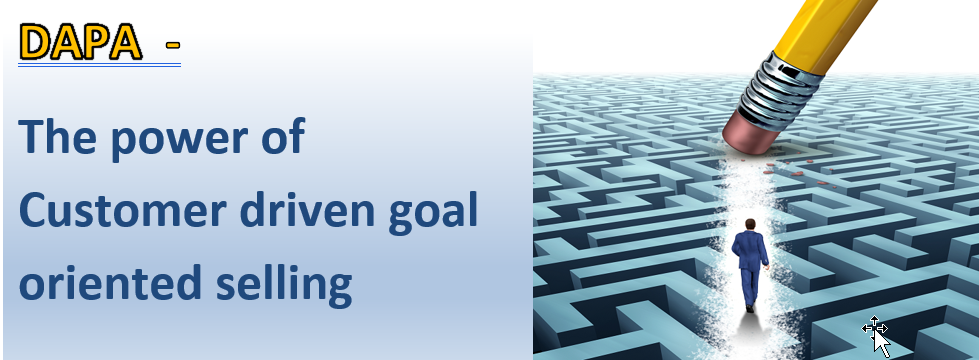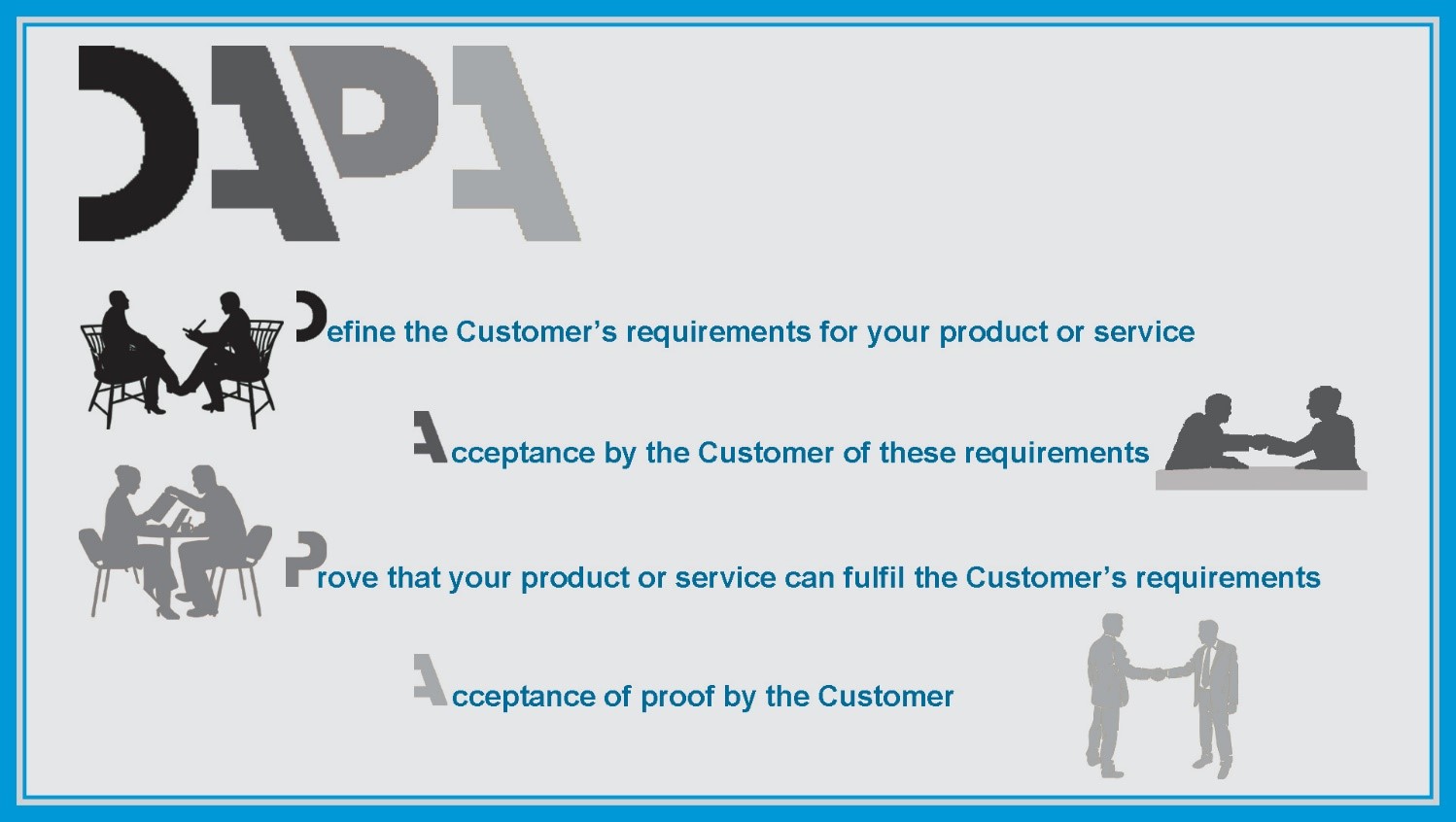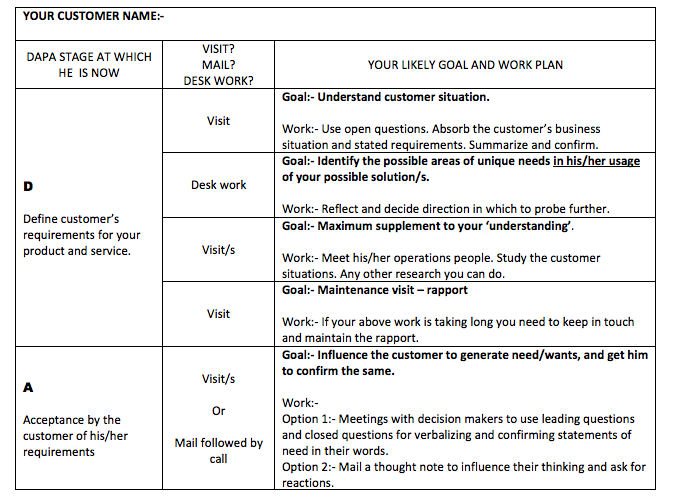

Can you answer these three questions?
- Should the salesperson have a role in defining needs of a Customer?
- Does goal oriented selling have to be high pressured selling?
- What is the true meaning of benefit selling?
Can you solve the following three problems?
- At an annual sales conference, the sales team is complaining about not having differentiating features in company’s products. The Vice President Sales says that while he will surely take it up with the Product Development people, “The real differentiation in the eyes of the Customer happens due to creative selling by an individual salesperson”. He goes on to explain how it can be done by following the DAPA method of selling. If you were in his place how you would explain what he means to his sales team?
- In the same conference, salespeople blame the common tendency of Customers to take out their ‘weapon’ of ‘price discussion’. The VP asked them why was the word ‘weapon’ used by them to describe this phenomenon, and goes on to say that the very reason for a salesperson to be with the Customer is to help him/her and not to fight. The Vice President then said that the simplest way to help Customers realize this is to have a goal for each visit. Can you elaborate on what he would have meant?
- A Customer inquiries: “We would like to look at some material for decorating our premises. We thought …….. “ The sales person begins “I understand. Just let me see ….. Now here we have a selection of wallpaper designs. Here are some new imported ones. The most elegant European designs! Just look at them! With those on your walls it will give a great professional look and you are sure to increase your sales. In fact, you are amongst the first ones to see these designs and ……”
The monologue sales talk is bad enough, but the stream of talking is not the only bad thing here. What else?
What is selling?
The classical description of sales process is as follows. It is ‘classical’ in the sense that it is very old but still valid for all face to-face selling even today.

Selling is ….
- To identify and/or generate a need.
- To satisfy that need with your products/services for mutual benefits.
Selling does not mean merely understanding the (stated) need, but rather generating a need. It involves the creative process of spotting latent requirements in the Customer situation, bringing it up and influencing it suitably. Such a need generated by the salesperson but owned by the Customer becomes the “service” provided by you to the Customer and can be a very real differentiator.

DAPA[1] is a simple yet a powerful method of personal sales process as evolved by Mercuri International. Each letter of DAPA© indicates 4 steps in the process of selling as above.
Mercuri splits this total process into two sets:- the DA (first half of first two steps) and then the PA.
Which of these 4 steps would most salespeople tend to take as their first step in selling to a Customer?
It is the 3rd step, P of DAPA© that is taken as a first step by many salespeople – telling the Customer what they can offer. Like the salesperson in Case#3. But as a famous saying goes, selling is not telling. Selling is much more than telling. It is to be able to make the Customer talk first, help him to open out and define his/her situation (DA) and then telling him what you can do that will be a real benefit to him/her.
[1] Mercuri International has a copyright for DAPA method of selling and it is a proprietary method developed solely for the personal use of people trained in it. No commercial use of DAPA is permitted for training by any entity other than Mercuri International units all over the world.
High pressure selling or forceful selling
Those who believe in ‘selling being telling’, tend to do their ‘P’ before ‘DA’. They are indulging in high pressure selling. But the #1 principle of sales ethics is that a sale which does not really benefit the Customer does not benefit the seller.
With DAPA you engage with the Customer in forceful selling. Forceful selling and high pressure selling are not the same. By following DAPA you will make it pleasant for the Customer to listen and talk to you about his/her business and/or situation and his/her benefits. In today’s world customers get very few salespeople like that and that by itself becomes a big differentiator for you.
You can make it more unique by being different than what your competitor’s salespeople do. Search for new ways of looking at problems and solutions, ways that no one uses now; or rediscover and reactivate old ways that have gone out of use and can be tried again.
Be different! You can, with DAPA!! That is your power in Customer driven goal oriented selling.
Goal setting for sales visits
How can DAPA help you become more goal oriented and ensure goals that are Customer oriented? The table below is a unique guide for you to do that. Adapt it to your selling situations. You could complete all the work in the table below in 10 minutes or spread over 10 visits. It is the principle of goal setting in table below that is the message.


In the Case#2 VP sales told the salespeople that simply by having a goal for each visit you can help the customer realize that price is not a weapon and that you are with him/her to help rather than to fight.
- Imagine that you are visiting your customer for one of the above as your purpose of visit.
- Try to verbalize the goal as above into what you will say to customer why you are there.
- Now compare it with a situation when you reach his office, say hello and wait for him to respond.
In which scenario will they “take out price as their weapon”?
About Mercuri International
With our unique combination of consulting and training expertise, we help nearly 15,000 companies per year in more than 50 countries, and in over 30 languages, to become more efficient and effective in their sales activities, and achieve necessary improvements in results.
For more information about Mercuri International, please visit ca.mercuri.net.
Phone: +1 579-631-6368 | E-mail: infocanada@mercuri.net | Copyright © Mercuri International


